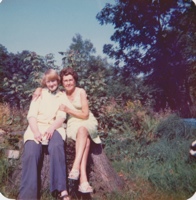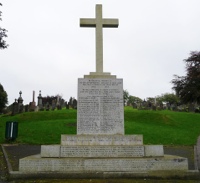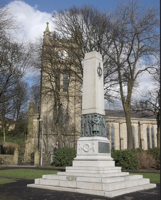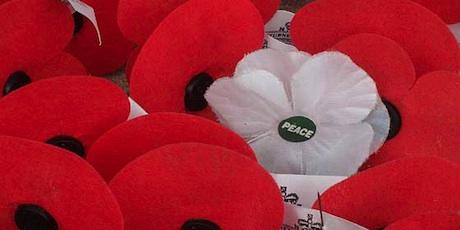Surnames
Interestingly when I looked at the Clitheroe Court Rolls for the Valley, many of these names were well represented even in the early days. the first entry in Farrer’s transcript of the Court Rolls for Rossendale mentions Ashworth (of course) and Tailor in 1509. Other early entrants are Pickup, Nuttall, Holt, Duerden, Heap, Lord…all names present in Rossendale in significant numbers today. Since it is estimated (almost certainly inaccurately) that there were only 16 families in Rossendale on deforestation in 1507, the persistence of these initial ‘founding father’ names is remarkable.
There are some names which appear not to have make it through time, the most noticeable of which is Bridge (or Brigg). There was a prominent family of Bridges in the C16 who were party to the usual misdemeanours of failing to maintain highways, blocking rights of way, causing an affray and the like. Later, there is a couple of Bridges buried in the graveyard of Sion Baptist in the 1800s. Yet I don’t know of any Bridges in Rossendale today though of course they may be there.
To complement this one-place study I have joined the Surname Society and have registered two studies. The first, and possibly most stupid, is the Ashworths of Rossendale. The second is the Bridges/Briggs of Deadwenclough, the old name for the area containing Springhill. I am a newbie at surname studies so it will be interesting to give it a go. These are both names with significant links to my place and a deeper understanding of their usage in the area will hopefully shed insights onto my place. Detailed work on this will have to wait until the completion of my MA however, but that’s another story.
It was interesting therefore to see Ancestry’s list of surnames which are extinct or threatened and those which have declined significantly over the last 100 years. The validity of the first two lists has been questioned as representing transcribers’ errors but the last list appears valid.
Of the fourteen surnames which have declined significantly in the last 100 years or so, seven are particularly common in the area, if not in Springhill itself necessarily. These are:
Ashworth (down 39%), Sutcliffe, Kershaw, Greenwood, Pratt, Nuttall and Ogden.
A bit of ‘quick and dirty’ research on find my past illustrated that there were 57 Ashworth births registered in the Haslingden district (which includes Rossendale) in 1840, 43 in 1900 and none in 2000. In E&W as a whole there were 322 Ashworth births registered as occurring in 1990 and 165 in 2000. Incidentally the same figures for Bridge were 3, 6 and 0 for Haslingden in 1840, 1900 and 2000 respectively (206 and 123 for the UK in 1900 and 2000). Not exactly robust scientific data but does suggest that the trend reported by Ancestry may be real, for Ashworth at least. (Bridge is probably within random variation and the other names were not studied)
But why?
The usual reasons why lines die out are failure to reproduce or a disproportionate number of girls being born. It is easy to see why this should be so for single family lines, less clear for an entire surname over an entire registration district. Ashworth is not such a socially disadvantageous surname that no none will marry into it. A genetic reason is theoretically feasible but difficult to imagine in practice.
(Thanks to @JanetFew and @1PlaceStudyReg for Twitter thoughts on this.)
Reviewing old photographs
A number of pictures of family members entering the church for weddings shows something of the layout of the graveyard before it was redeveloped when the old church was dismantled and the flats erected. These are on the Sion - old pictures album.
A small number of pictures of family members in the village give an idea of the village in days before. These are in the old Higher Cloughfold and Higher Cloughfold albums.
A fabulous picture of my grandmother with nine other girls standing in a row with hands on their heads, c 1908. This is on the education page.
Pictures of Springhill Cottage’s garden 1955-60 and Sunset View 1960s, linked on the houses page under the respective properties.
This lovely picture of two Springhill residents Eileen Taylor (Sunset View) and Ivy Bell (The Cot) date and place unknown but probably mid 1970s.

Quaker burial ground
Shortly afterwards I was thrilled to receive an email from one of the Friends forwarding a copy of the transcript of the internments in the old burial ground at Chapel Hill and those in the Crawshawbooth meeting house. As the burial ground was in use between 1663 and 1847 this was an exciting document, all the more so as I understand that the original was lost in the aforementioned flood. I’m glad that someone had the foresight to make a transcript.
The spreadsheet is not intuitive but is offered unaltered on the Quakers in Chapel Hill page.
Remembrance
There is one Springhill man and another 7 from the immediate area who died in WWI:
Harry Dawson,
James Driver
Harry Hart
Thomas Harvey
Wellington Pilkington
William Plaice
Joseph Taylor
Fred Taylor
The nearest municipal war memorial is in Rawtenstall about a mile away. Actually, there are two…
The earliest is in the cemetery. t was erected in Sept 1915 under the auspices of Carrie Whitehead, daughter of a local mill-owning family, local worthy and not a woman to be messed with.

It reads:
The War Memorial 1914 - 1919 Rawtenstall Cemetery
Roll of Honour
This cross was erected by Carrie Whitehead, September 1915
that it might be some comfort to those who lost men very dear to them
In grateful memory of the men of Rawtenstall who gave their lives for their
country in the Great War 1914 - 1918
He will swallow up death in victory, and the Lord will wipe away tears from all faces
Is. XXV. 8.
It is probably the first municipal war memorial in the UK. As it was started in 1915 the names are added in the order in which they came to the notice of the borough. Unfortunately it omits the names of four of the 8 Higher Cloughfold casualties: Messers Hart and Harvey and the two Messers Taylor.
The second is the cenotaph in the centre of Rawtenstall, between the library and parish church. This was erected in 1929 by the aforementioned Carrie Whitehead. It has no names.
It is inclusive, honouring those who died, those who fought and those who served at home in both world wars.
6 O'CLOCK FACE: A TRIBUTE OF HONOUR/ TO THE MEN WHO/ MADE THE SUPREME SACRIFICE/ TO THE MEN WHO CAME BACK/ AND TO THOSE WHO WORKED AT HOME/ TO WIN SAFETY FOR THE EMPIRE/ 1914-1918
12 O'CLOCK FACE: TO THE MEMORY OF/ ALL WHO GAVE THEIR LIVES IN THE SERVICE/ OF THEIR COUNTRY DURING THE SECOND/WORLD WAR/ ALL WHO SERVED ON SEA LAND OR IN THE AIR/ AND ALL WHO WORKED AND SERVED AT HOME/ 1939 - 1945
The sculptures show four groups of figures:
(1) ABOVE WWI INSCRIPTION - SOLDIER (ON CORNER); FARM LABOURER, WOMAN AND A CHILD, SAILOR AND WREN
(2) ABOVE WREATH - AIRMAN, TWO NURSES, LABOURER, SERVICEWOMAN, SOLDIER (AS ABOVE)
(3) ABOVE WWII INSCRIPTION - MEDICAL ORDERLY, MINER, FISHERMAN, OFFICER, AIRMAN (AS ABOVE)
(4) ABOVE WREATH - SAILOR (AS ABOVE), COAL MINERS, RAILWAYMEN, MEDICAL ORDERLY (AS ABOVE)
(Details from the Imperial War Museum)
It is not enough to remember. If we truly want to honour those who served we should stand for peace, justice, truth and simplicity wherever we can.

(memorial photographs courtesy of Robert Wade under Creative Commons Licence.The provenance of the poppy picture is unknown)




